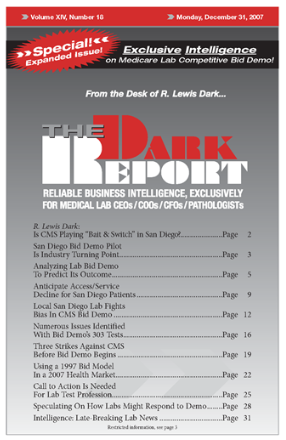CEO SUMMARY: Meet Internist Laboratory of Oceanside, California. For 18 years, its owners, Gary and Christine Stevens, have provided a high level of laboratory testing services to office-based physicians in Northern San Diego County. Now Internist Laboratory is the perfect poster child for all the flaws and bias built into the Medicare Laboratory Competitive Bidding …
Local San Diego Lab Fights Bias In CMS Bid Demo Read More »
To access this post, you must purchase The Dark Report.


